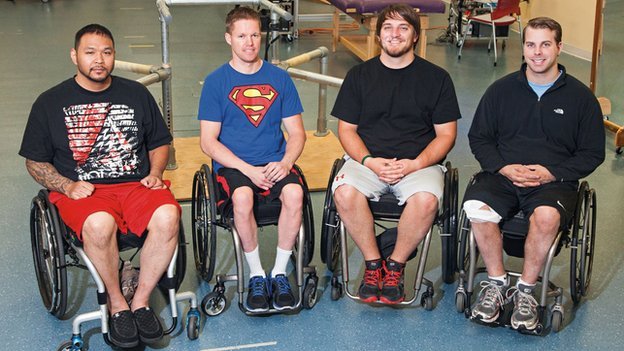
A medical team at the University of Louisville and the University of California has reported that four paralyzed men have been able to move their legs for the first time in years after electrical stimulation of their spinal cords.
The men were able to flex their toes, ankles and knees – but could not walk independently.
A report, in the journal Brain, suggests the electricity makes the spinal cord more receptive to the few messages still arriving from the brain.
Experts said it could become a treatment for spinal injury.
The spinal cord acts like a high-speed rail line carrying electrical messages from the brain to the rest of the body. But if there is any damage to the track, then the message will not get through.

People with spinal cord injuries can lose all movement and sensation below the injury.
The team has been pioneering electrical stimulation of the spinal cord below the injury.
Three years ago they reported that Rob Summers – a keen baseball player who was paralyzed from the chest down in a hit-and-run car accident – was able to move his legs while supported on a treadmill.
Now three more patients, who had been paralyzed for at least two years, have gone through the procedure and regained some movement.
They were able to control their legs at a precise pace and all but one of them was able to control the force of the movement.
It confirms that function can be restored after paralysis and that Rob Summers’ case was not a one-off.
It is not certain how the stimulation helps, however the researchers believe that some signals are still crossing the injury, but are not normally strong enough to trigger movement.
The electrical stimulation made the lower spinal cord more excitable so it was able to respond when the messages did arrive from the brain.
Dr. Roderic Pettigrew, director of the US National Institute of Biomedical Imaging and Bioengineering, said: “Now that spinal stimulation has been successful in four out of four patients, there is evidence to suggest that a large cohort of individuals, previously with little realistic hope of any meaningful recovery from spinal cord injury, may benefit from this.”
[youtube 2SaacVTkthc 650]